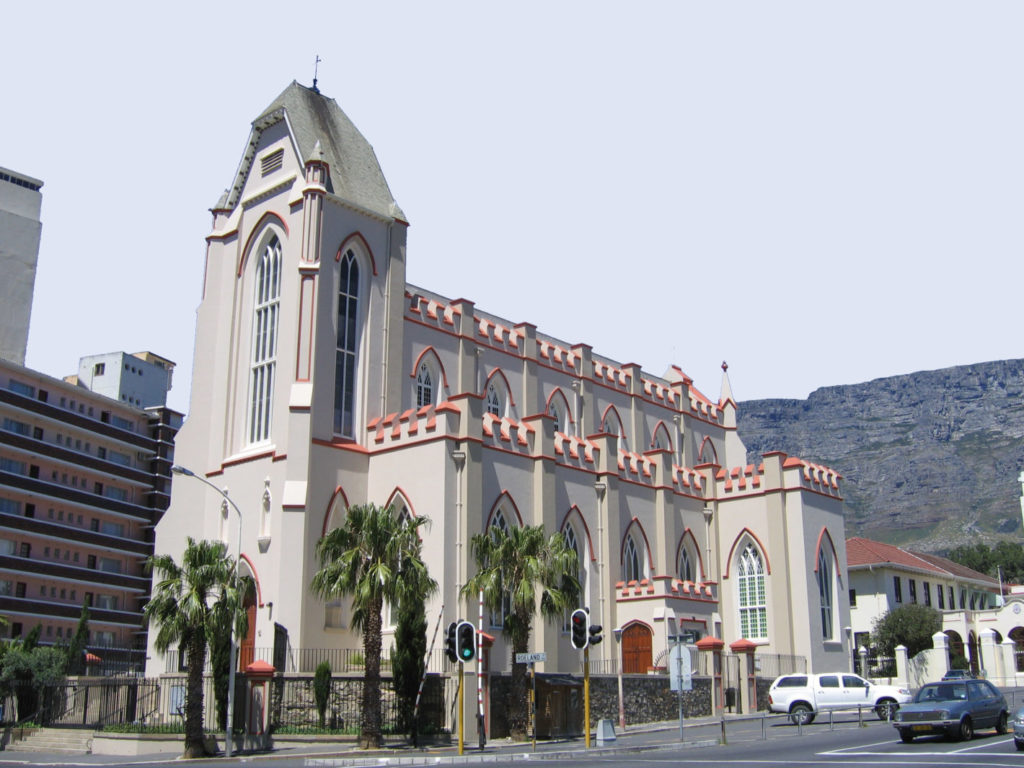On June 7, 1818 the Pope Pius VII established the Apostolic Vicariate of the Cape of Good Hope and Adjunct Territories, thus beginning the institutional presence of the Catholic Church in South Africa. In these 200 years its presence has developed in such a way that the Episcopal Conference of Catholic Bishops of South Africa, which includes the countries of South Africa, Botswana and Swaziland, is composed today of 28 dioceses and one apostolic vicariate.
On June 25 of this year, the Archdiocese of Cape Town began its year-long bicentennial celebrations with a Mass of thanksgiving in the cathedral of this magnificent city, dedicated to St. Mary of the Flight into Egypt. A good number of South African bishops attended the start of the celebrations.
The bicentennial celebrations do not hide the fact that the presence of the Catholic Church in this part of the planet dates back to the discovery of the Cape of Good Hope by the Portuguese Bartholomew Diaz in 1488. At first he called it Cape of Storms, because of the dangers of crossing it, as evidenced by the countless shipwrecks, since two oceans meet at the same point, the Atlantic, with its cold currents, and the warmer Indian Ocean. The navigators gave it its present name in the hope of finding a route to India, and this was rewarded.
In 1652, the Dutch established a base halfway between Europe and Asia to supply their ships with water, meat and vegetables. As a result of the anti-Catholic reaction of the Protestant Reformation, the Dutch colonists forbade Catholics to practice their faith. In 1688 the French Huguenots arrived and, fleeing the anti-Protestant persecution, added fuel to the fire. Proof of this is the story of a French bishop who, when his ship was shipwrecked in the area in 1660, was not allowed to celebrate Mass on land. When in 1685 six Jesuit priests appeared on an astronomical mission, they were not allowed to celebrate Mass in the city, nor did they allow Catholics to go to their ship to receive the sacraments.
Finally, in 1804 the governor of the colony declared religious tolerance, allowing Dutch priests to come and care for the few Catholics there were. But in 1806 the priests were expelled. For thirty years, the situation of the Catholics was very precarious.
Linked to Egypt
In 1837, Pope Gregory XVI established the Apostolic Vicariate of the Cape of Good Hope, separate from the Mauritius Islands. Finally, in April 1838, the Dominican Bishop Patrick Griffith chose the Virgin Mary, Our Lady of the Flight into Egypt, as patroness of the new vicariate, because of the persecution that Catholics had suffered during these years and because of the African connotation of Egypt.
In 1852, the Oblates of Mary Immaculate established a community in Natal, and it was they who initiated the evangelization of the blacks. The Oblates can be said to be the evangelizers of South Africa. Previously, most of the evangelization efforts had been directed towards the white community.
The Catholic Church grew rapidly during the 20th century. In 1951, Pius XII established the present structure of the Catholic hierarchy comprising the ecclesiastical provinces of Cape Town, Durban, Pretoria and Bloemfontein (where the writer Tolkien, perhaps the best known South African after Nelson Mandela, was born), each with its suffragan dioceses. After the Second Vatican Council, the Catholic Church began to increase its opposition to the apartheiddefended by the Afrikaner Protestants.
Zimbabwe established its own episcopal conference in 1969, followed by Lesotho in 1972 and Namibia in 1996. In 2007 the ecclesiastical province of Johannesburg was constituted due to its rapid growth, which has reached some 8 million inhabitants, being elevated to an archdiocese.
Like the rest of the country's institutions, perhaps the greatest challenge facing the Catholic Church in South Africa is to integrate the black population, which constitutes 80 %, with the white minority. In a Protestant majority, the Catholic Church is gradually overtaking the 7 % of the society. Within the African continent, South Africa is a special case, containing two societies, one European and the other African, living side by side, with the best and the worst of both. The three fundamental scourges of the country are poverty, unemployment and lack of equality, which together produce a high level of crime. The black government of the ANC (African National Congress, party of Nelson Mandela, who died in 2013), unopposed since the fall of apartheid, is trying by all means to remedy the situation, lately with corruption problems. Let us hope that Our Lady of the Flight from Egypt will help us to find the way forward.
Johannesburg (South Africa)








